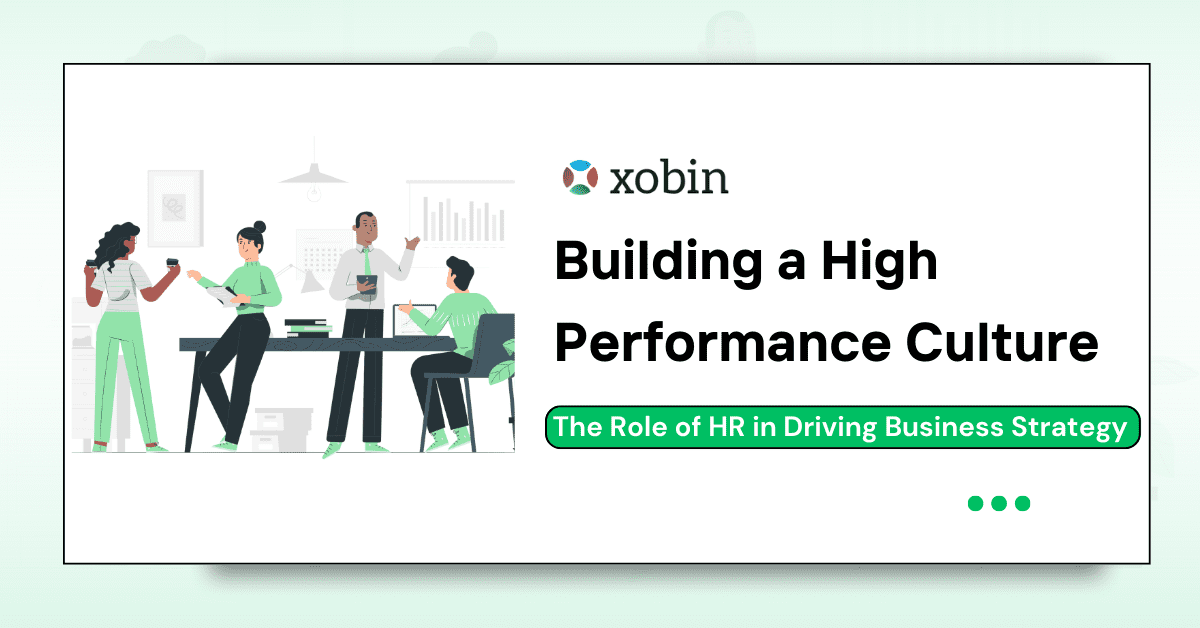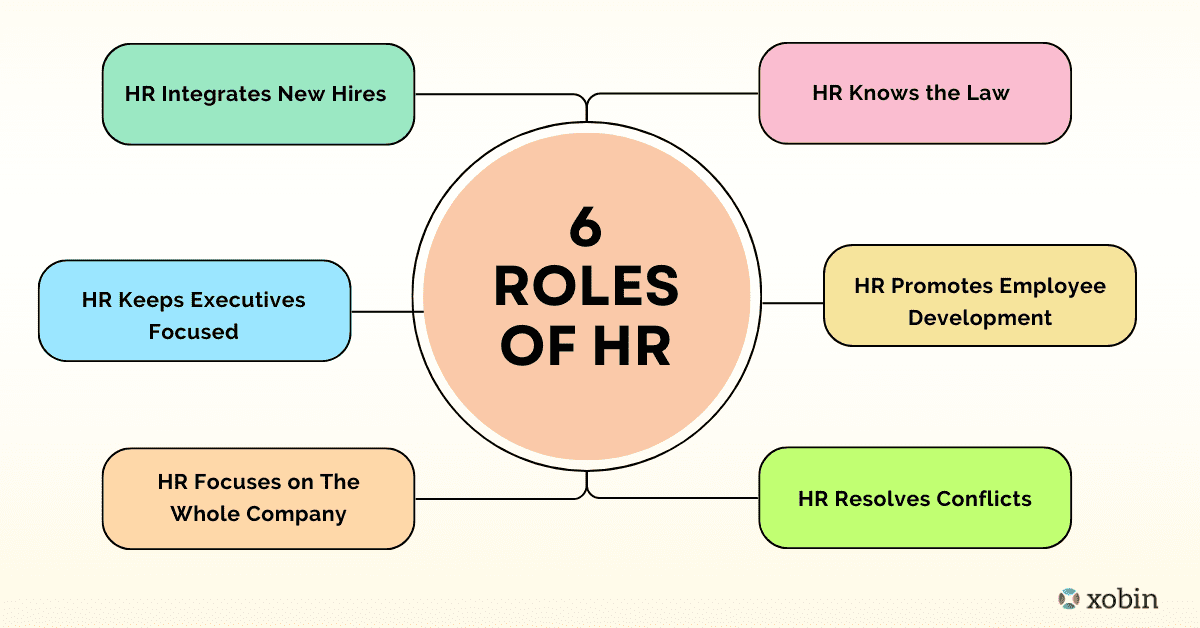
A high-performance culture is key to company success in the complex world of business. But who’s driving this change? You might be surprised: It’s pre-employment testing. Among several roles of HR, this one is a prime one.
Reports reveal a staggering statistic: only 15% of employees worldwide are engaged in their jobs. The implications? A vast majority of the workforce is not performing at their potential.
Top 6 Roles of HR in Driving Business Strategy:
As building and shaping a high-performance company culture is a role of HR not many approve of it. In fact, over two-thirds of business leaders expect their HR teams to actively participate in shaping business strategy. Such a statistic provides a compelling insight into the expanding role of HR in today’s corporate landscape.
We’ll delve into some of the reasons businesses can benefit from integrating an HR department and how these teams build a high-performance culture.

HR Integrates New Hires
New hire orientation – it’s a phrase that may conjure images of tedious paperwork and bland corporate presentations. However, when executed effectively by Human Resources, it serves as a launchpad for embedding high-performance culture right from an employee’s first day.
The role of HR in new hire orientation is multifaceted and strategic. They are the architects of the onboarding process, shaping an employee’s first impressions and experiences within the company. To accomplish this, HR utilizes a suite of strategies designed to integrate new hires smoothly and effectively into the organization.
One such strategy is a structured orientation program. HR outlines the company’s mission, vision, values, and goals, aligning new hires with the company’s purpose from day one. They also provide a comprehensive overview of job expectations, performance standards, and the available resources to achieve these.
Looking for Hiring Software? Check out the best Hiring Software solutions.
In fact, a formal onboarding program can increase retention by 50% and productivity by 62%.
Moreover, HR departments often employ mentorship programs, pairing new hires with seasoned employees. This approach facilitates a quicker understanding of the company’s workings and helps establish relationships, fostering a sense of belonging and engagement.
The benefits of a well-structured HR orientation process are manifold. First, it accelerates the learning curve for new hires, reducing their time to become productive team members. It also helps to instill a sense of pride and loyalty in the company, reducing turnover rates and improving overall job satisfaction.
In the grand scheme of building a high-performance culture, effective new-hire orientation is a key piece of the puzzle. It sets the stage for high performance, aligning new employees with the company’s strategic objectives right from the onset. This alignment ensures that every member of the organization is working towards the same goals, enhancing efficiency, and driving business success.
HR Keeps Executives Focused
In corporate life, the company’s mission statement stands as a beacon, guiding every business decision and strategy. The company’s mission statement is a promise to its customers, employees, and stakeholders. And the HR team ensures this promise is kept.
Without a strong focus on the mission, executives can easily become sidetracked by short-term goals or immediate pressures. This misalignment can lead to decisions that, while beneficial in the immediate term, could harm the company’s long-term vision and strategic objectives. Furthermore, a leadership team that’s not united behind the company mission can create a trickle-down effect of confusion and disengagement among employees. But fear not role of HR professionals are equipped with various strategies to keep executives anchored to the company mission.
One such strategy is consistent communication.On the other hand, HR teams ensure the company mission is embedded in the executives’ minds through regular briefings and updates. Plus, they emphasize the mission in executive meetings, performance reviews, and corporate events, continually tying back decisions and strategies to this central purpose.
In addition, the role of HR includes employing training and development programs specifically designed around the company’s mission. These programs equip executives with the necessary skills and knowledge to lead in alignment with the company’s central purpose. This ensures the mission is at the heart of decision-making to promote a shared understanding and commitment among the leadership team.
Keeping executives focused on the company mission breeds a high-performance culture in several ways. First, when leadership actions and decisions consistently reflect the mission, it demonstrates a commitment to a shared purpose.
In turn, this fosters trust, engagement, and motivation among employees, driving them to perform at their best. Furthermore, a clear focus on the mission ensures that all business strategies and initiatives are aligned toward the same goals, optimizing efficiency and effectiveness.
HR Focuses on The Whole Company
The Human Resources team: they’re the unsung heroes of the corporate world. Unlike other departments that focus on a specific aspect of a company’s operations, HR has a unique purview that extends across the entire organization.
At its core, HR’s role is to manage and optimize the company’s most valuable asset: its people. From recruiting top talent and nurturing their development to mediating conflicts and shaping company policies, HR is involved in every facet of the organization. They’re the glue that binds all departments together, ensuring the company operates as a cohesive, harmonious whole.
Best HR Software Solutions
Campus Recruitment Software
With our online campus recruitment software screen, hire top talents hassle-free. Everything is under one platform, from test creation to the candidate's evaluation.
Rating 5.0
Based on 321 user ratings
API Integration by Xobin
Get integrated and harness the strength of robust assessments with Xobin APIs. Save sweat and time and focus on your core offering, not building your assessment stack.
Rating 5.0
Based on 321 user ratings
Coding Skill Assessment Software
With our 100+ coding assessments on various languages such as Java, Python, JavaScript, React, Angular, etc., evaluate and hire the best-talented developers.
Rating 5.0
Based on 321 user ratings
Pre-Employment Testing Software:
Get access to the vast library of validated tests to screen candidates using online assessments. Simplify your recruitment process with our cloud-based Pre-employment Testing Software.
Rating 5.0
Based on 321 user ratings
HR achieves this by implementing consistent policies and procedures across all departments. They establish standards for hiring, onboarding, performance management, and more. This ensures fairness, reduces bias, and promotes a sense of unity throughout the company. Moreover, HR also fosters interdepartmental collaboration. By implementing team-building activities, cross-departmental projects, and communication platforms, they break down silos and promote a culture of cooperation and mutual understanding. But what are the benefits of having HR involved in the entire company?
A cohesive approach to people management leads to a more engaged and productive workforce. As a result, employees feel valued, understood, and are more likely to contribute their best efforts towards the company’s objectives.
Ultimately, HR’s strategies and initiatives are designed to engage and empower employees across all departments. As a result, this fosters an environment where high performance is the norm.
HR Knows the Law
As guardians of the company’s legal and ethical integrity, HR teams ensure the organization stays on the right side of the law. So, HR professionals are well-versed in the legal rules and regulations that govern the workplace. They navigate complex laws such as the Fair Labor Standards Act (FLSA), which establishes minimum wage and overtime pay. They also enforce compliance with the Family and Medical Leave Act (FMLA), which provides eligible employees with job-protected, unpaid leave for specified family and medical reasons.
Moreover, they manage adherence to the Americans with Disabilities Act (ADA) and the Occupational Safety and Health Act (OSHA), ensuring a safe and inclusive work environment. Equally important is their role in upholding Title VII of the Civil Rights Act, which prohibits employment discrimination based on race, color, religion, sex, and national origin.
HR’s understanding of these laws and regulations provides numerous benefits. First, it safeguards the company from potential legal disputes and hefty penalties, ensuring operations can continue unhindered. Second, it fosters an environment of fairness, equality, and respect, contributing to higher levels of employee satisfaction and morale.
In the broader context of building a high-performance culture, HR’s role in legal compliance is integral. A company that respects and adheres to the law sends a clear message to its employees: it values integrity, fairness, and respect. This fosters trust and engagement among employees, promoting higher productivity and performance.
As Mark Twain once quipped, “Do the right thing. It will gratify some people and astonish the rest.” In maintaining legal compliance, HR does the right thing, laying the foundation for a high-performance culture that gratifies employees and drives business strategies that propel the company toward success.
HR Promotes Employee Development
In the quest to build a high-performance culture, one of HR’s most potent tools is promoting employee development. This strategy goes beyond mere task completion – it’s about fostering a workforce that continuously grows and adapts, thereby driving the company’s strategic goals.
HR departments take a two-pronged approach to employee development. The first is through individualized professional development plans. These plans, often created in collaboration with the employee, outline clear growth paths and include specific, measurable, and time-bound objectives. Coupled with regular performance reviews, these plans ensure employees have a clear vision of their development trajectory.
The second prong is through ongoing training and learning opportunities. This can take many forms, from in-house training sessions and workshops to providing access to online courses or industry conferences. These opportunities help employees expand their skill sets and demonstrate the company’s investment in its people, which can boost morale and job satisfaction.
But why does employee development matter in building a high-performance culture? Simply put, an organization is only as strong as its people. By investing in employee development, HR ensures the organization has a skilled, competent workforce capable of driving business strategies.
Moreover, a culture that prioritizes learning and growth is a culture that attracts and retains top talent. For instance, the number one reason employees left their jobs was a lack of growth opportunities. Instead, employees are more likely to stay with a company that invests in their professional growth. This can result in reduced turnovers and foster a stable, high-performing team.
HR Resolves Conflicts
In any organization, unresolved conflicts can be a significant roadblock to achieving high performance. As a result, HR teams are trained to address various issues, from inter-team disputes to discrimination and harassment. Also, HR professionals are adept at navigating these sensitive situations, utilizing active listening, mediation, and negotiation. They provide a neutral ground for airing grievances, ensuring that all parties feel heard and that disputes are resolved fairly and amicably.
By resolving conflicts effectively, HR contributes to a more harmonious, cooperative work environment. This enhances employee satisfaction and retention, as well as promotes a culture of collaboration and mutual respect.
But beyond just resolution, HR departments also focus on conflict prevention. For instance, they create policies and guidelines that promote a respectful and inclusive work environment, reducing the potential for disputes. Regular training sessions on communication, teamwork, and workplace etiquette are also conducted to equip employees with the skills to manage conflicts constructively.
This proactive and responsive approach to conflict management is a cornerstone in building a high-performance culture. By mitigating disruptions, fostering a cooperative environment, and promoting mutual respect, HR facilitates a workspace where employees can focus on their roles and responsibilities without undue tension. This increased focus and collaboration directly contribute to overall organizational performance, highlighting HR’s pivotal role in driving business strategies.
Conclusion:
In today’s fast-paced business world, the Role of HR has emerged as a driver of business strategy, fostering high-performance cultures. From aligning executives with the company mission, guiding new hires, and ensuring legal compliance to resolving and preventing conflicts, HR is reshaping the future of work.
Businesses that effectively harness these tools will not only attract and retain top talent but also foster an environment of continuous learning and innovation. This is the future of high-performance cultures – where HR, technology, and business strategy are intertwined, propelling businesses toward sustained success.


